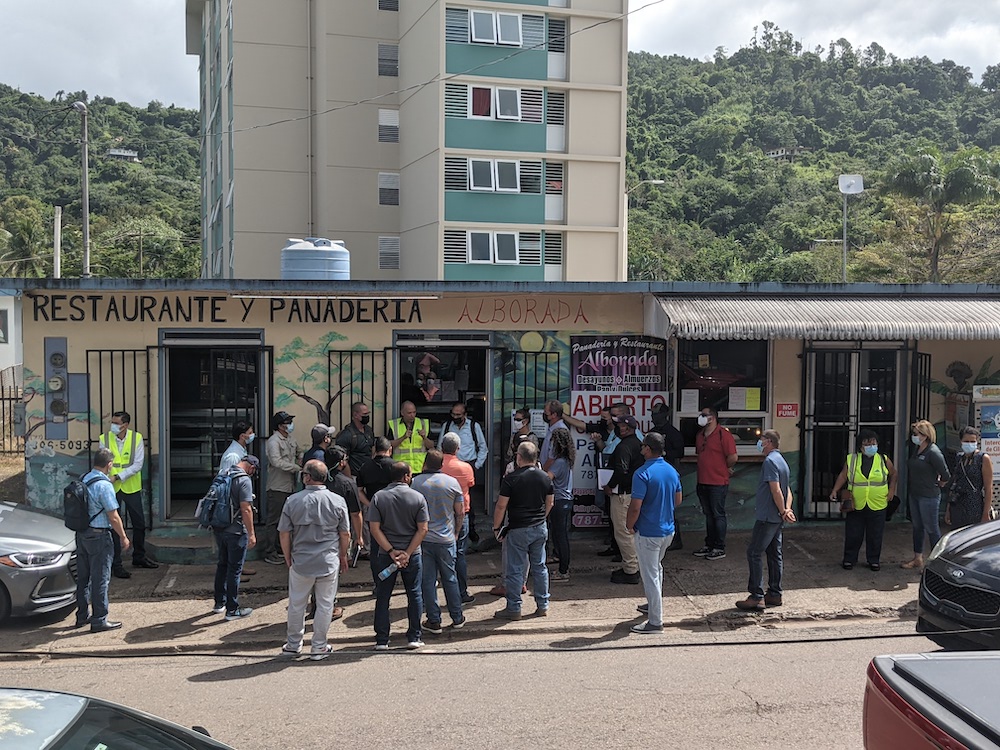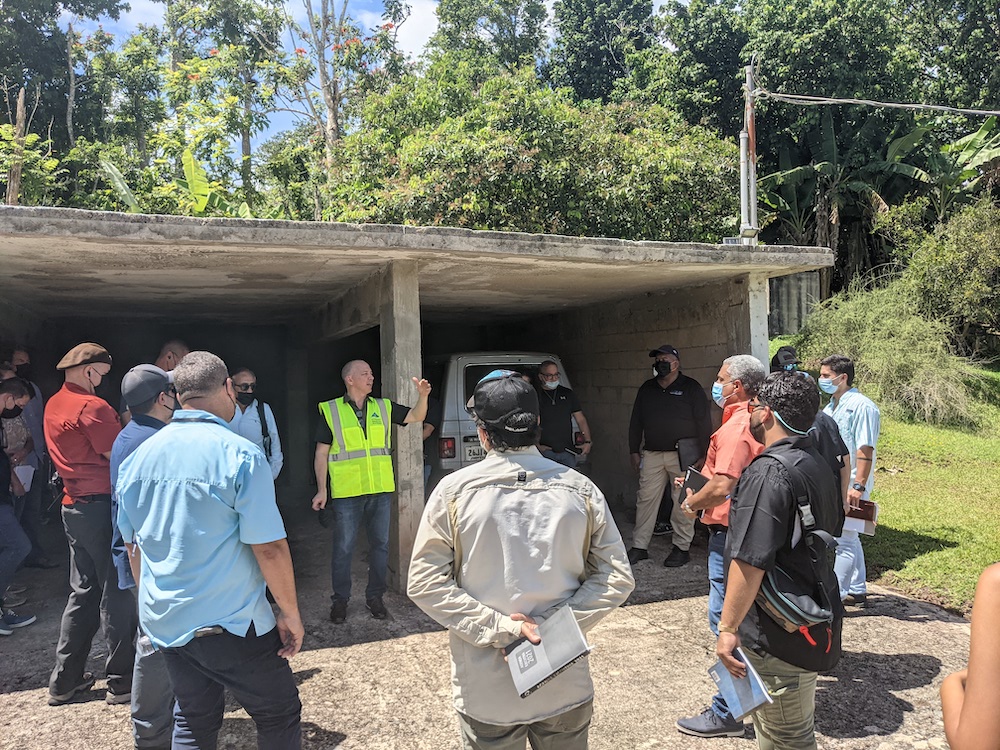Four Years After Hurricane Maria, IREC Is Helping Puerto Rico Rebuild
Four years ago today, Hurricane Maria made landfall in Puerto Rico and led to one of America’s most devastating natural disasters. The hurricane killed thousands of people and caused the longest blackout in American history, leaving more than 200,000 households without power for more than six months.
Today, Puerto Rico is at a crossroads. While the immediate disaster has ended, far more remains to be done to build a resilient and prosperous future for this island home to more than 3 million Americans.
In Puerto Rico, IREC is working with multiple partners and stakeholders to assist in the long-term transition to a renewable, resilient, and just energy future. Every day, our island-based staff is working with a network of local partners to install solar panels and microgrids, promote local resilience, and expand the options for solar-plus-storage financing mechanisms for all sectors of Puerto Rico.
The reason we’re so committed is simple: Clean energy remains a central component of Puerto Rico’s recovery. The disaster that followed Hurricanes Maria and Irma was first and foremost an energy crisis. Puerto Rico’s outdated, centralized power grid based on fossil fuels created the conditions for a long-term power failure. The lack of electricity severely impeded access to clean water, medical care, education, transportation, and other necessities for millions of people.
A clear solution is to develop a modern electricity grid that prioritizes distributed energy resources (DERs) like solar and battery storage. This allows homes, businesses, and community centers to provide backup power that is independent from the grid. It reduces reliance on fragile transmission lines that transport electricity across the island from fossil fuel power plants.
Moreover, these goals are achievable. Puerto Rico has a solar energy resource similar to Southern California, but today only obtains a tiny fraction of its electricity from the sun. A recent study found that installing solar on Puerto Rico homes could provide 75% of the island’s electricity by 2035 at a lower cost than following the status quo.
Puerto Rico adopted a law in 2019 that will require 100% renewable energy in 2050, with an interim deadline to reach 40% renewables only four years from now in 2025. These are daunting goals—the island now only gets about 5% of its energy from renewables—but they will lead to widespread benefits if achieved. Our analysis found that meeting the targets will create 20,000 solar energy jobs in 2030, compared to about 2,000 today.
Achieving the clean energy transition in Puerto Rico comes with a host of challenges. At IREC, we’re engaging with local businesses, policymakers, communities, and NGOs to help chart a path forward.
“Puerto Rico currently has a once-in-a-lifetime opportunity to get the transition to clean and reliable energy,” says IREC Program Director Carlos Alberto Velázquez. “Our Puerto Rican Solar Business Accelerator has shown that a solid foundation for an energy transition includes equitable solar financing, inclusive workforce development, quality control improvement in the industry, and community-centered microgrid projects. The funds appropriated to rebuild the electrical system, following its complete destruction during Hurricane Maria, must favor a renewable energy future for Puerto Rico and its people.”
Solar Saves Lives

Our work in Puerto Rico goes back to the weeks immediately after the hurricanes. In the fall of 2017, The Solar Foundation, which recently merged with IREC, launched the Solar Saves Lives initiative with partners including the Clinton Foundation, Hispanic Federation, Direct Relief, national and local solar companies, and many other nonprofits and foundations.
Solar Saves Lives supported solar and battery storage installations at critical community centers in Puerto Rico. Early on, we identified federally qualified health centers as one of the areas of greatest need. These health clinics are often located in remote areas where residents have little or no ability to pay for services. Solar energy with battery storage allows the clinics to continue providing essential medical care even after the electricity goes down, while saving millions of dollars in energy costs over the life of the projects.
Thanks to Solar Saves Lives and related initiatives from our partners, at least 15 federally qualified health centers have now installed solar-plus-storage. You can visit our website to read more about some of the clinics. We are proud to be part of a larger philanthropic movement to support clean energy development in Puerto Rico, which collectively led to at least 400 solar and storage projects totaling 12 MW in solar and 9 MWh in storage. We are continuing these efforts with an installation now underway at the Plaza del Mercado de Río Piedras, a large community market in San Juan.
IREC’s Work in Puerto Rico Today
These philanthropic efforts are vital, but they clearly will not be sufficient on their own to develop a clean energy infrastructure at scale. That’s why IREC is now leading a number of far-reaching programs to lay the foundation for long-term growth.
IREC’s Puerto Rican Solar Business Accelerator is a federally funded program to strengthen and support Puerto Rico’s solar industry and spur the development of a highly qualified workforce. Along with Pathstone, Inc. and other partners, we are promoting solar workforce development, innovative finance solutions, and business technical assistance.
Under this program, we recently issued the RFP for a new solar microgrid project in the rural community of Castañer, which will power essential community services such as a supermarket, post office and bakeries. This is the first of two planned microgrid projects, which will serve as models for other community resilience initiatives in Puerto Rico and across the United States. Over 15 developers took part in a site visit in Castañer last Friday in advance of the RFP deadline on September 29.


IREC is also engaging with local governments through the SolSmart program, which has helped over 400 communities across the United States reduce barriers to solar energy growth. SolSmart has selected the Institute for Building Technologies and Safety as a new Advisor organization, which will provide intensive technical assistance on solar energy to Puerto Rico municipalities.
IREC has also assisted the Puerto Rico Energy Bureau with developing new DER interconnection procedures to enable more efficient and cost-effective DER integration onto the electric grid. The Bureau’s regulatory process on interconnection reform is ongoing.
Support Our Work
While the hurricanes in Puerto Rico may have faded from the headlines, we know the long-term effort to build a resilient clean energy economy is only beginning. We are grateful to be working with so many supportive communities, clean energy companies, and other organizations who are helping to make this work possible.
If you would like to help support our work, you can make a donation to IREC here. If you would like to discuss an idea for a future partnership, contact us today.



